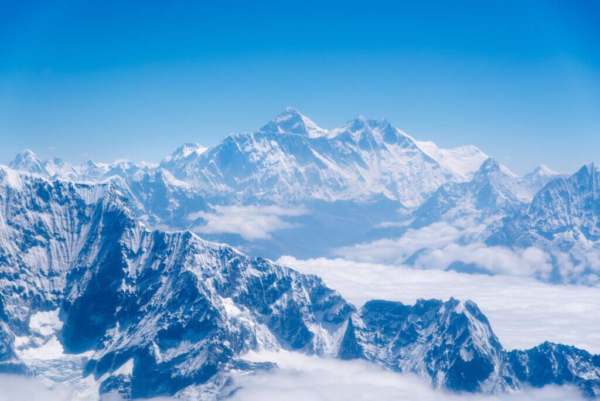Table of contents
Mount Everest a name that has captivated the world because of its reputation as Earth’s tallest height. Its awe-inspiring beauty and towering peak are well-wellfamous. but, a lesser-regarded factor of Everest, regularly referred to as the “Rainbow Valley,” exhibits the mountain’s darker facet. This article aims to shed mild on this mysterious region, presenting crucial statistics for those considering an ascent.
Mt Everest – Rainbow Valley
Even though the name “Rainbow Valley” would possibly evoke photos of a picturesque landscape, the fact is a way extraordinary. This vicinity is a haunting graveyard of fallen climbers. It’s far situated below the northern ridge of Mount Everest at an altitude exceeding eight,000 meters. Countless bodies lie scattered throughout the vicinity, a stark reminder of the mountain’s perils.
Clad in vibrant blue, purple, orange, and inexperienced jackets, those corpses provide the area with its colorful moniker. alongside our bodies, multicolored particles, including tents, cans, and oxygen tanks, contribute to the rainbow-like appearance.
Each year, climbers try to conquer the summit. Some succeed, others turn back, and tragically, some lose their lives. Most of these fatalities occur in Everest’s “death region” – an area above 8,000 meters. The hostile environment, characterized by skinny air, severe weather, and fierce winds, makes survival a constant warfare. The slender trails inside the Death Zone leave little room for the fallen. Our bodies are often disregarded, locating their very last resting area inside the Rainbow Valley.
Recuperating the deceased from such treacherous terrain is a high-chance endeavor, requiring a couple of people and a giant attempt. As a result, the bodies continue to be undisturbed, and Rainbow Valley grows increasingly crowded with every passing year.
Gaining clear expertise of Rainbow Valley on Mt. Everest With the Idea of the “Death Zone”
Knowledge Altitude sickness
While going up in altitude, climbers chance experiencing altitude sickness, additionally referred to as acute mountain sickness. This circumstance arises due to inadequate oxygen supply to the mind at high elevations.
As climbers ascend, the barometric stress of the air decreases, causing oxygen molecules to disperse and resulting in thinner air. This faded oxygen availability adversely impacts the body’s organs. It results in symptoms including labored breathing, trouble on foot, coughing up fluid, disorientation, or even unconsciousness.
In these conditions, blood viscosity increases, dehydration sets in, and the likelihood of a stroke upward thrust. moreover, altitude sickness can severely impair judgment. Therefore, each hard step taken at excessive elevations becomes a race against time and the body’s obstacles.
What do Climbers name the “death zone”?
The death region on Mt. Everest refers to any mountain vicinity above 8,000 meters (26,247 ft). Over two hundred fatalities have happened inside this treacherous region, incomes it the ominous name of the “death region.”
At such extreme elevations, the oxygen stage is dangerously low, with the simplest one-third of the everyday concentration at sea level. To mitigate this hazard, climbers carry supplementary oxygen tanks in the course of their ascent. insufficient oxygen delivered at those heights can result in altitude illness and, in a few instances, death.
The trails within the dying region are notoriously slender and congested, imparting little room for the steady movement of climbers. In peak season, queues of climbers can be visible waiting to finish their ascent, as showcased in viral snapshots. This congestion can force climbers to spend extended durations inside the death area. As a result, it in addition will increase the inherent dangers related to excessive-altitude mountain climbing.
Rainbow Valley is a reminder of the Danger
What you can expect of the Rainbow Valley
Rainbow Valley Mt Everest, derives its poignant call from the colorful jackets adorning the bodies of climbers who lost their lives on the mountain. The hues of the rainbow – pink, green, and blue – are represented by using those colorful down suits, partially hidden with the aid of snow.
A lot of those fatalities passed off in the notorious death region. If climbers perished along the mountain trail, others were regularly forced to move their bodies off the course to clear the way.
The reality of Everest is stark, leaving climbers with little preference but to prioritize their survival. With the trail being perilously narrow, icy, and treacherous, each moment is an issue of life or death.
Whilst encountering deceased climbers, those nevertheless ascending should be cognizant of staying alive. In the death zone, in which altitude illness can come to be debilitating, climbers should additionally withstand the urge to sleep, as succumbing to the cold ought to be fatal.
The deadly fact of Everest’s dying region and the Formation of Mt Everest’s Rainbow Valley
The death zone in Mt. Everest, encompassing areas above eight,000 meters (26,247 feet), is infamous for its excessively wide variety of fatalities. The extraordinarily low oxygen ranges in this zone can result in an existence-threatening loss of oxygen for climbers, main to demise.
The trail to the summit in the death zone is so slim that it can accommodate only one man or woman at a time. As a result, the bodies of folks who perish in this region are pushed into Rainbow Valley, correctly turning it into their final resting vicinity.
Deceased climbers’ bodies are both stepped over or moved off the path into Rainbow Valley or other locations underneath the ridge. Chad Gaston, a current Everest climber, described the challenges of navigating past incapacitated people, inclusive of one man or woman wrapped like a mummy.
Over three hundred climbers lost their lives in the demise zone of 1922. In 2015 alone, an avalanche claimed the lives of at least 19 climbers. As the quantity of casualties continues to rise, Rainbow Valley grows increasingly colorful with the remains of the fallen.
Why is there an accumulation of deceased climbers in Mt Everest’s Rainbow Valley?
What will become of our bodies in the death zone or Rainbow Valley Mount Everest? In most cases, they stay undisturbed indefinitely, as healing is tremendously hard, if now not possible.
Helicopter rescues at such excessive elevations aren’t possible due to the effective winds, at the same time as the extreme weather conditions, slender trails, and high altitude pose widespread demanding situations for those trying to get better our bodies. It frequently takes several people to retrieve a single body, a task few are willing to undertake.
The value of recuperating a body can exceed 70,000 USD. Even though some of our bodies have been recovered after paying this hefty sum, the process remains dangerous and might bring about extra fatalities.
For example, in 1984, Nepalese mountaineers misplaced their lives whilst trying to recover a body from the death sector. Regardless of large economic assets, there’s no guarantee that a body can be successfully retrieved. Consequently, the Rainbow Valley continues to build up the stays of climbers who’ve perished on Mt. Everest.
What’s the principal motive of death on the Mount Everest
Most of the people of fatalities on Mt. Everest arise within the death sector, a place above 8,000 meters. This elevation presents numerous demanding situations, including skinny oxygen degrees, harsh climate conditions, sturdy winds, and slender trails. Even a minor misstep can be fatal, making each step a matter of lifestyle and death.
As of 2022, Everest has been summited via 6,098 special people, for a complete of (Approx.) 11,346 summits. Till 2022 with c.310 recorded fatalities when you consider that 1924. The demise charge dropped under 1% in 1980.
A BBC record revealed that the general public of deaths on the mountain were due to avalanches (approximately 30%), while 20% resulted from acute mountain illness. Falls and exhaustion are different significant elements contributing to fatalities at some stage in Everest climbs.
The very best death rate took place throughout the 1970-1980s, at 2.2%, but has since decreased.
A few facts about the Rainbow Valley on Mt Everest
- Tenzing Norgay and Edmund Hillary finished the first confirmed ascent of Mt. Everest in 1953, and the mountain has claimed the lives of over three hundred climbers. The sizable majority of those fatalities befell within the dying zone.
- Because of the decrease in air stress at such high elevations, a mean person can simply breathe in about 30% of the oxygen they generally obtain at sea level.
- Without outright acclimatization, an individual accustomed to sea-stage situations could lose recognition within 3 minutes within the Everest death region.
- Given the extreme conditions inside the dying sector, climbers estimate that it may take in to 12 hours to traverse the 1.72km distance between South Col and Everest’s summit.
- The look at “Mortality on Mount Everest” suggests that profound fatigue and behind-schedule summit instances are early factors related to the next fatalities.
- Retinal hemorrhages can affect one in 4 Everest climbers. even though these normally improve upon descending to lower altitudes, they can nevertheless be deadly inside the death zone.
- An ABC Catalyst article states that one in 20 climbers who reached Everest’s summit dies whilst descending to base camp.
- Most of our bodies frozen at the mountain are observed in the Everest death zone.
- No matter these daunting demanding situations, climbers have effectively navigated the danger zone and again from Everest through the years.
Everest Base Camp stories
Everest Base Camp is the launching point for climbers attempting to summit Mt. Everest. The region is packed with tent settlements of mountaineers, and at some point in the height season, the base camp will become vibrant with multicolored tents.
This region acts as the final resting station before climbers begin their ascent. Even at the bottom camp, mountaineers frequently share songs, reviews, and testimonies with one another. A few of the testimonies whispered amongst climbers at Everest Base Camp revolve around the corpses observed in Rainbow Valley.
Some of the most well-known of these memories are those of inexperienced Boots, drowsing splendor, and Hannelore Schmatz.
ALSO READ ABOUT: Tran MaicoUSA: Unveiling Innovation and Excellence
Green Boots Everest
Green Boots is a story from Everest expeditions, having acquired great media interest. The “surname” refers to a deceased climber on the mountain’s northeast ridge.
The body is known as inexperienced Boots because of the inexperienced boots it wears and the oxygen tanks on its lower back. It’s miles broadly believed that the frame belongs to Tsewang Paljor, an Indian climber who went lacking during a 1996 ascent.
Other climbers additionally perished in the same incident, however, their bodies have been not observed. green Boots, but, remains in a small cave beneath the summit.
This frame serves as a landmark for Everest climbers. About eighty of them rest in this cave at some stage in their ascent. inexperienced Boots is the most visible and well-known corpse in Rainbow Valley.
Sleeping beauty Everest
Another well-known story is that of Francys Arsentiev, the first American girl to summit Mt. Everest without supplemental oxygen.
The incident took place on May 22, 1998. Francys and her husband set out on the day trip like some other mountain climb. Her ascent went easily, but during the descent, she became disoriented and become stranded at the mountain for three days without supplemental oxygen. A rescue crew was eventually dispatched to carry her down.
Whilst the group located Francys, she changed into barely breathing, critically frostbitten, and close to death. They controlled to lower her as some distance as they could, however, it became increasingly tough to retain the descent.
In the end, they had no choice but to go away to die on the slopes of Mt. Everest. Francis changed into located mendacity on her back as if asleep, which brought about her being nicknamed “slumbering beauty.”
Hannelore Schmatz- First Lady to die on Everest
Hannelore Schmatz, a German mountaineer, holds the unfortunate difference of being the primary lady to perish on the slopes of Mount Everest. In 1979, she and her husband set out to triumph over the arena’s maximum height. The organization efficiently reached the summit, but at some point of the descent, Hannelore and American climber Ray Genet fell in the back.
Exhausted and not able to keep, they determined to spend the night with one of the Sherpas in Everest’s notorious death zone. A fierce snowfall struck, and Ray Genet succumbed to hypothermia earlier than daybreak. Hannelore and the Sherpa managed to live to tell the tale the night time, however, at an altitude of eight,290 meters, Hannelore collapsed, propped up through her backpack, by no means to rise once more. Her final words have been a plea for water.
For years, Hannelore’s corpse remained in the equal spot, her open eyes and flowing hair a haunting reminder of the mountain’s perils. Numerous climbers handed her body for the duration of their ascents and descents. Tragically, climbers lost their lives in an try and get better her body five years later; their stays have been observed entangled in ropes on the mountain. A 12 months later, powerful winds swept Hannelore’s body off the ridge. Her story serves as a chilling reminder of the dangers on Mount Everest.
George Mallory
The invention of George Mallory’s body in 1999, 75 years after he died in 1924, marked a vast moment in Everest’s history. George Mallory, alongside his mountain climbing associate Andrew Irvine, attempted to be the first to summit Mount Everest but disappeared in the course of the expedition. Whether they efficaciously reached the summit before their demise remains unanswered.
In 1999, for the duration of a surprising heat spring, Conrad Anker, a renowned mountaineer, observed Mallory’s frame even while filming a documentary with his group. The identity came from a tag with Mallory’s name sewn into it. Because of the acute bloodless, his upper torso, his left arm, and a part of his legs had been remarkably well-preserved.
The damaged leg bone on his frame indicates that Mallory had likely fallen or slipped, leaving him incapacitated. Over the years, high winds and harsh climate stripped parts of his body of apparel and skin. But, the acute bloodless had largely preserved the frame in its frozen state.
The destiny of Mallory’s climbing associate, Andrew Irvine, remains infamous, as his body has never been determined.
Mt Everest Excursion
Indeed, at the same time as Mount Everest faces numerous challenges and dangers, it remains the final purpose for many climbers around the world. The experience of achievement that comes from status at the highest factor on the planet is an unparalleled enjoyment, and for many, it’s worth dealing with the dangers.
With thousands of climbers having efficaciously summited Mount Everest and a demise ratio of beneath 1%, the height maintains to draw adventurers from across the globe. There are number one routes to the summit: one from Nepal (the southern direction) and one from Tibet (the northern path). The southern path, taken by Tenzing Norgay and Sir Edmund Hillary at some stage in their historical 1953 ascent, is the maximum popular and comparatively quicker choice.
Embarking on an Everest excursion requires prior high-altitude hiking enjoyment, willpower, bodily stamina, and mental fortitude. The harsh weather and excessive elevation pose specific challenges that climbers should triumph over to attain their dream of reaching the summit.
So, for people who dare to step out of their comfort sector and address the Everest task, keep in mind that cautious practice, training, and a strong resolve are critical. Notwithstanding the inherent dangers, the possibility to triumph over the world’s tallest height and gaze down upon the Earth from 8,848 meters (29,029 ft) is a once-in-a-lifetime enjoy that many adventurers dream of accomplishing.



